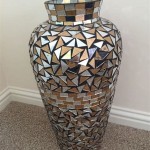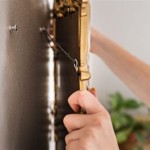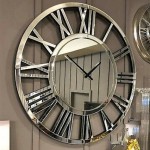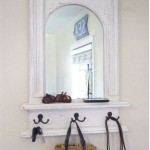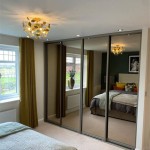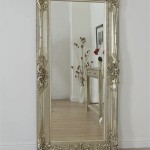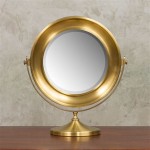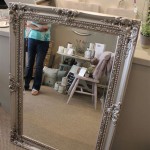How To Put LED Strip Lights Behind a Mirror
Adding LED strip lights behind a mirror creates a sophisticated ambiance, enhances visibility, and adds a touch of modern design to any room. This article provides a comprehensive guide to installing LED strip lights behind a mirror, covering essential aspects from planning and material selection to installation and safety considerations.
Planning and Preparation
Careful planning is crucial for a successful installation. Begin by determining the desired lighting effect. Do you want a soft, ambient glow or a brighter, more functional light? This will influence the type and brightness of the LED strip to choose. Measure the perimeter of the mirror accurately to determine the required length of the LED strip. Consider the mirror's mounting method – is it directly affixed to the wall or is there a gap between the mirror and the wall? This will affect the placement and diffusion of the light.
Next, choose the appropriate LED strip. Several factors should be considered, including color temperature (warm white, cool white, or RGB), brightness (measured in lumens per meter), and voltage (typically 12V or 24V). For bathroom mirrors, waterproof (IP65 or higher rated) LED strips are essential. For other locations, non-waterproof strips are generally sufficient. Consider the power supply requirements. Ensure the power supply has sufficient wattage to power the entire length of the LED strip. A power supply with slightly higher wattage than required is recommended for optimal performance and longevity.
Finally, gather the necessary tools and materials. This typically includes the LED strip, power supply, connecting wires, mounting clips, a soldering iron (if required), wire strippers, electrical tape, and a measuring tape. A level is also helpful for ensuring straight lines during installation.
Installation Process
Before starting the installation, ensure the power supply is unplugged for safety. Clean the back of the mirror and the wall surface where the LED strip will be mounted to ensure optimal adhesion. If using adhesive-backed LED strips, peel off the backing paper and carefully adhere the strip to the back of the mirror or the wall, following the planned layout. If the strip isn't self-adhesive, use mounting clips to secure it in place. Maintain consistent spacing between the clips for a uniform lighting effect.
Connecting the LED strip to the power supply depends on the type of strip. Some strips have connectors that plug directly into the power supply, while others require soldering. If soldering is necessary, carefully strip the ends of the connecting wires and the LED strip wires. Use a soldering iron to join the wires, ensuring a secure connection. Cover the soldered connections with heat shrink tubing or electrical tape to prevent short circuits. If the LED strip is too long, it can often be cut at designated cutting points marked on the strip. Ensure to cut only at these designated points to avoid damaging the circuitry.
For mirrors mounted directly on the wall, the LED strip can be placed along the perimeter. For mirrors with a gap between the mirror and the wall, consider placing the LED strip on the inner edge of the frame or on the wall behind the mirror, directing the light inwards. This creates a halo effect and minimizes direct glare. Conceal the wiring as much as possible by routing it behind the mirror or along the wall. Use cable clips or adhesive channels to keep the wiring organized and secure.
Safety and Testing
After completing the wiring, double-check all connections to ensure they are secure and properly insulated. Before plugging in the power supply, inspect the entire setup for any potential hazards, such as exposed wires or loose connections. Once you are confident that everything is safe, plug in the power supply and test the lights. Verify that the LED strip illuminates evenly and that all sections are functioning correctly.
If any issues are detected, unplug the power supply immediately and troubleshoot the problem. This might involve checking the connections, replacing faulty components, or adjusting the wiring layout. Once the lights are working correctly, consider adding a dimmer switch to control the brightness of the LEDs. This allows for greater flexibility in adjusting the lighting to suit different moods and needs.
Regularly inspect the LED strip and wiring for any signs of damage or wear. Replace any damaged components promptly to prevent safety hazards. Keep the area around the power supply clear of obstructions to ensure proper ventilation and prevent overheating. By following these steps and adhering to safety precautions, individuals can successfully install LED strip lights behind a mirror, enhancing their space with a stylish and functional lighting solution.

How To Diy Vanity Mirror With Led Strip Lights
How To Design And Install Led Strip Lighting Behind A Mirror Step By Guide

How To Install A Strip Light On Mirror

How To Backlight A Mirror 14 Steps With Pictures Wikihow

How To Diy Vanity Mirror With Led Strip Lights

How To Diy Vanity Mirror With Led Strip Lights

How To Backlight A Mirror 14 Steps With Pictures Wikihow
How To Design And Install Led Strip Lighting Behind A Mirror Step By Guide

How To Install A Strip Light On Mirror

How To Diy Vanity Mirror With Led Strip Lights

